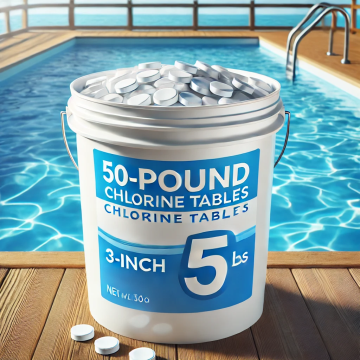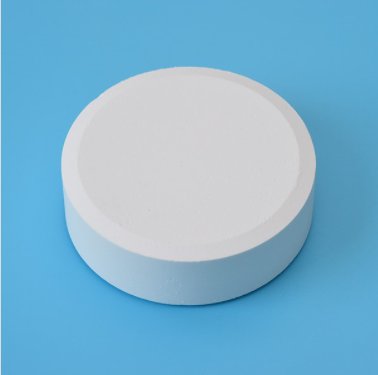When it comes to maintaining clean and safe water, chlorine tablets play a pivotal role across various settings, particularly in swimming pools. Understanding how to use these tablets effectively can make a significant difference in water quality, swimmer safety, and overall maintenance. In this article, we will explore the optimal usage of chlorine tablets in different environments, focusing specifically on their application in pools, and providing insights into achieving the best results.

I.Understanding Chlorine Tablets
Chlorine tablets are a popular choice for pool sanitation because they offer a convenient and efficient way to disinfect water. These tablets dissolve slowly, releasing chlorine gradually, which helps maintain consistent sanitation levels. When it comes to chlorine tablets for pools, knowing the right dosage and application is crucial for achieving the best results.
II.How to Determine the Best Chlorine Tablet Dosage
The ideal dosage of chlorine tablets can vary depending on several factors, including pool size, water temperature, and swimmer load. For instance, in a residential pool, a general rule of thumb is to maintain a chlorine level between 1-3 parts per million (ppm). This means that for a typical backyard pool of about 20,000 gallons, adding one best chlorine tablet (usually around 3 inches in size) every week should suffice. However, it’s important to test the water regularly to ensure that the chlorine levels remain stable.
III.Adjusting Dosage for Environmental Factors
Several environmental factors can influence how many chlorine tablets you need to use. For example, heavy rainfall or debris can introduce contaminants into the pool water, necessitating an increase in chlorine dosage. If your pool is exposed to frequent rain or surrounding foliage, you might need to add additional tablets to maintain the desired chlorine level.
Moreover, the number of swimmers using the pool can also impact chlorine demand. More swimmers mean more contaminants, which can quickly deplete chlorine levels. If your pool experiences heavy use, consider adding extra chlorine tablets for pools before or after peak usage times to ensure water remains clean and safe.
IV.Using Chlorine Tablets in Various Pool Types
Different types of pools may require specific approaches when using chlorine tablets. For instance, above-ground pools might have different volume calculations compared to in-ground pools, affecting how many tablets you should use.
In general, for an above-ground pool of around 15,000 gallons, adding 1-2 chlorine tablets per week should keep the water adequately sanitized. In contrast, larger in-ground pools may require more frequent dosing, especially if they are designed to accommodate larger groups of swimmers.
V.The Importance of Regular Testing
To ensure you’re using the correct amount of chlorine tablets, regular testing of your pool water is essential. You can use test strips or liquid testing kits to measure both the chlorine levels and the pH balance. Ideally, your pool’s pH should be maintained between 7.2 and 7.8, as this range allows chlorine to work effectively.
If the pH level is too high or too low, it can affect chlorine’s efficacy. For example, if the pH is above 8.0, the chlorine may not be as effective at killing harmful bacteria. Therefore, testing your water frequently and adjusting both pH and chlorine levels accordingly can greatly enhance the effectiveness of your chlorine tablets.
VI.Best Practices for Storing Chlorine Tablets
Proper storage of your chlorine tablets is just as important as their application. Store them in a cool, dry place away from direct sunlight and moisture. This helps maintain their effectiveness and prevents premature degradation. Additionally, always keep chlorine tablets in their original packaging or a dedicated container to avoid any accidental contamination with other chemicals.
VII.Consideration of Alternative Chlorination Methods
While chlorine tablets are widely used, some pool owners may consider alternative methods for chlorination, such as liquid chlorine or saltwater systems. However, it’s important to note that each method has its advantages and disadvantages. For example, while saltwater systems may seem convenient, they still require the generation of chlorine and may have higher initial setup costs.
Using chlorine tablets for pools remains one of the most straightforward and cost-effective methods to maintain water quality. With proper usage, they provide effective sanitation and are suitable for various types of pools.
VIII.Environmental Impact and Safety
Another aspect to consider is the environmental impact of using chlorine tablets. Chlorine can be a harsh chemical, and improper use can lead to harmful byproducts. However, when used correctly, chlorine tablets are an effective way to ensure water safety without excessive environmental harm.
Always follow the manufacturer’s guidelines for dosage and handling to minimize any negative impact. Educating yourself about the safe use of these tablets will not only protect swimmers but also contribute to a healthier environment.

IX.Conclusion
In conclusion, understanding the optimal usage of chlorine tablets in different environments is essential for maintaining clean and safe swimming water. By determining the right dosage, considering environmental factors, and regularly testing water quality, pool owners can ensure effective sanitation. Whether you’re using chlorine tablets in residential pools or commercial facilities, following best practices will lead to a safer and more enjoyable swimming experience.
Chlorine tablets remain one of the most effective and convenient solutions for pool sanitation. Their ability to provide consistent and reliable disinfection makes them a staple in pool maintenance. So, whether you’re a new pool owner or a seasoned expert, make sure you know how to use chlorine tablets effectively to keep your pool in top shape year-round.

 Instant
Quote
Instant
Quote Email
Us
Email
Us